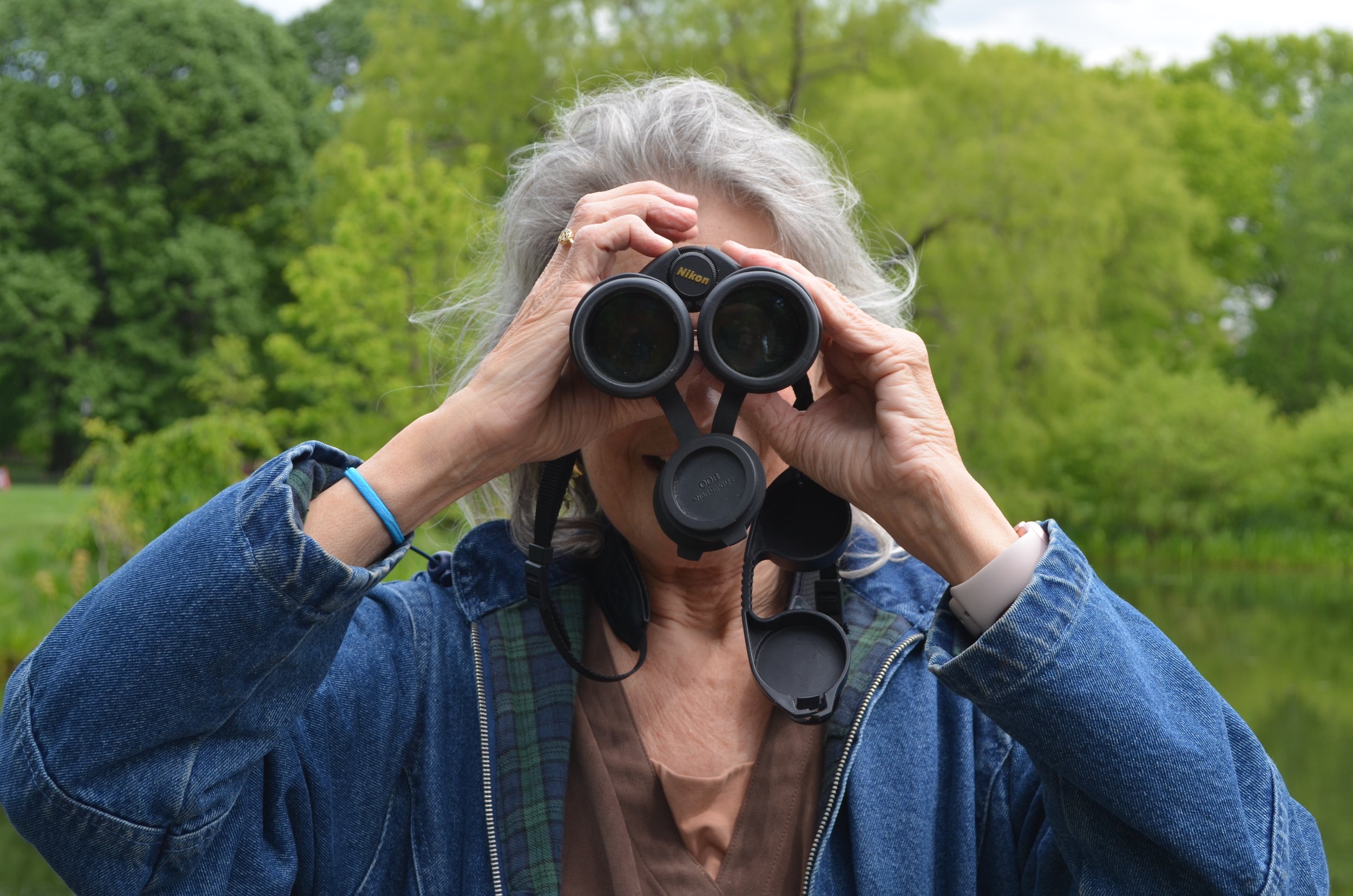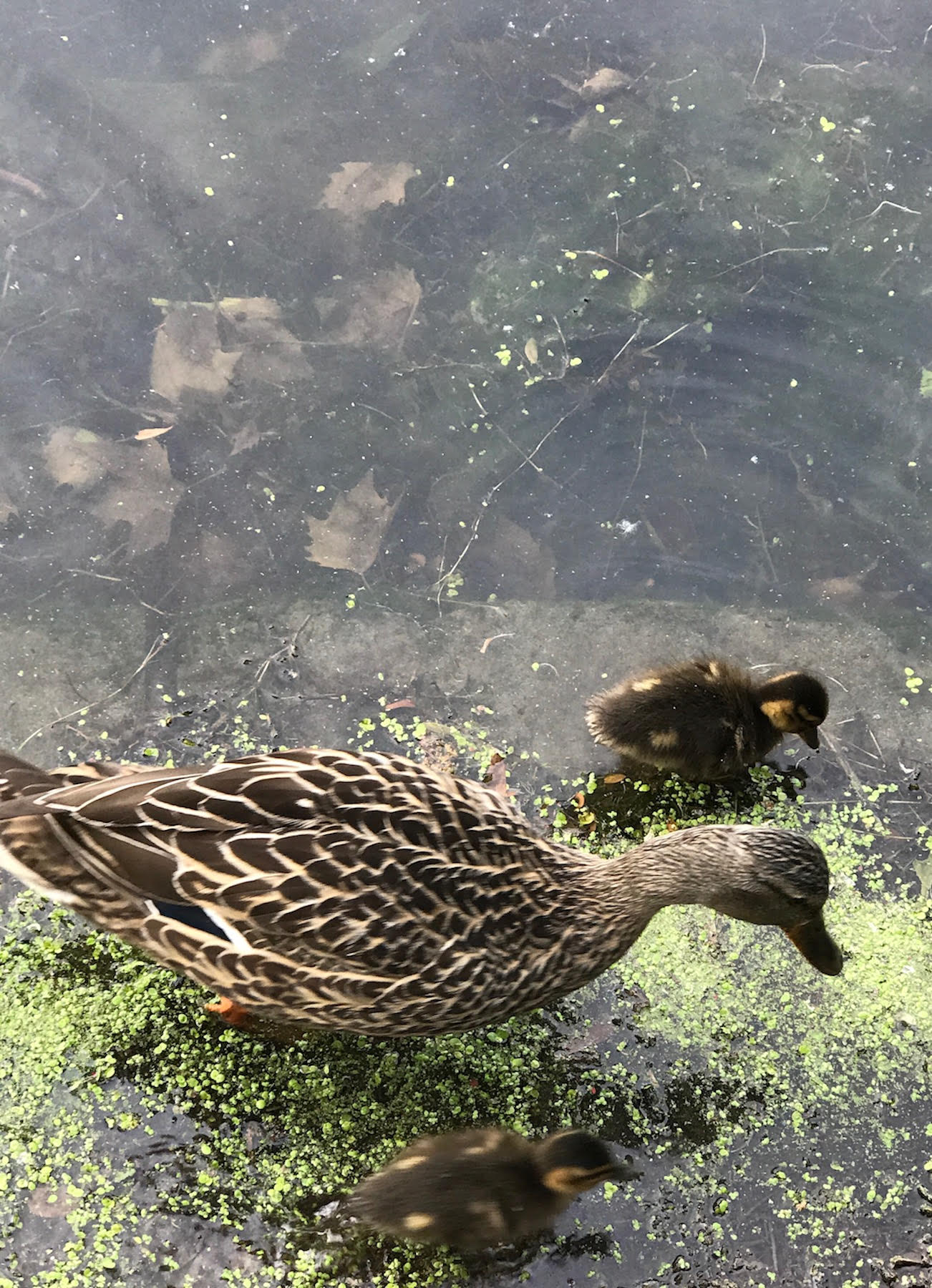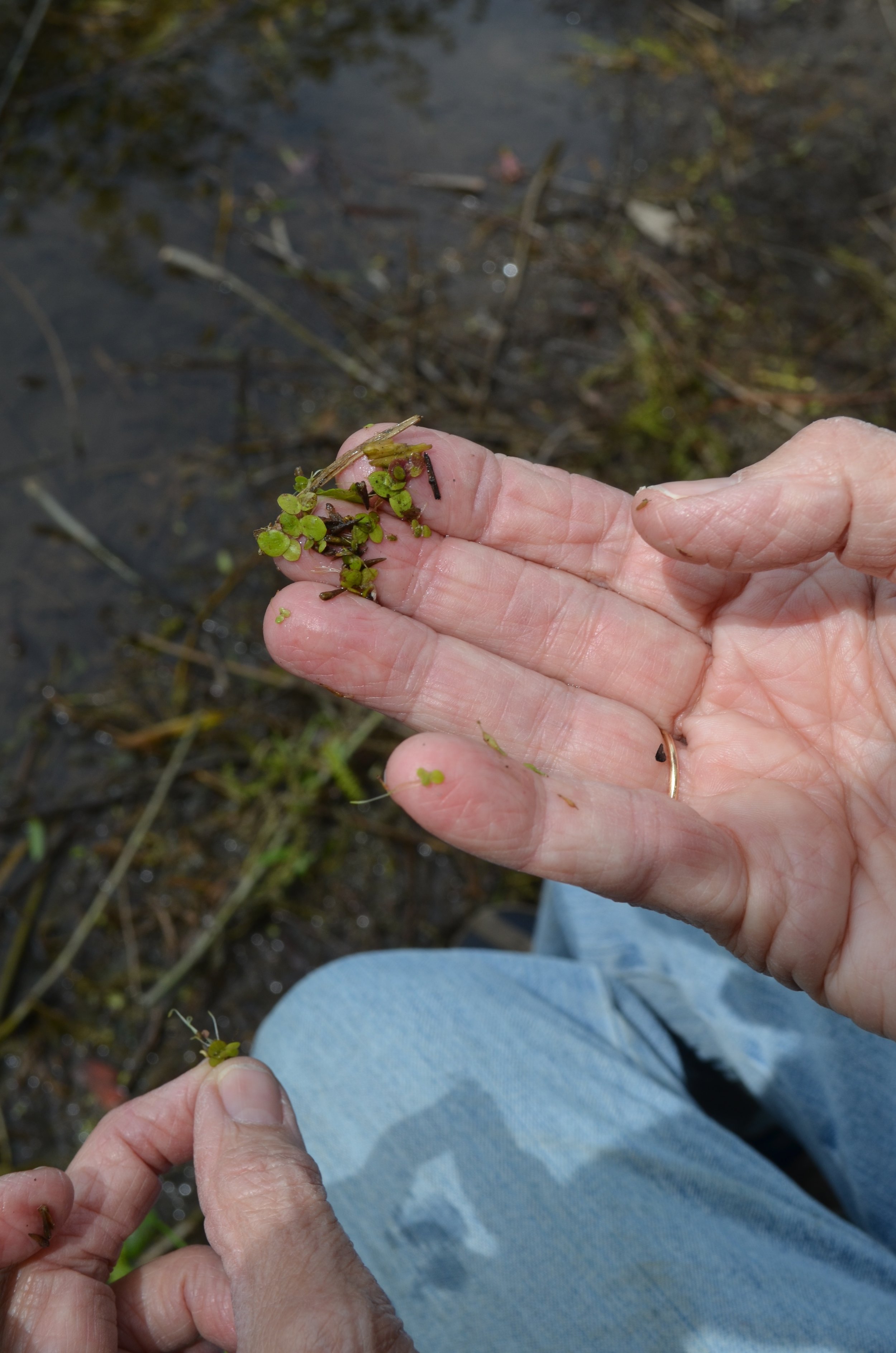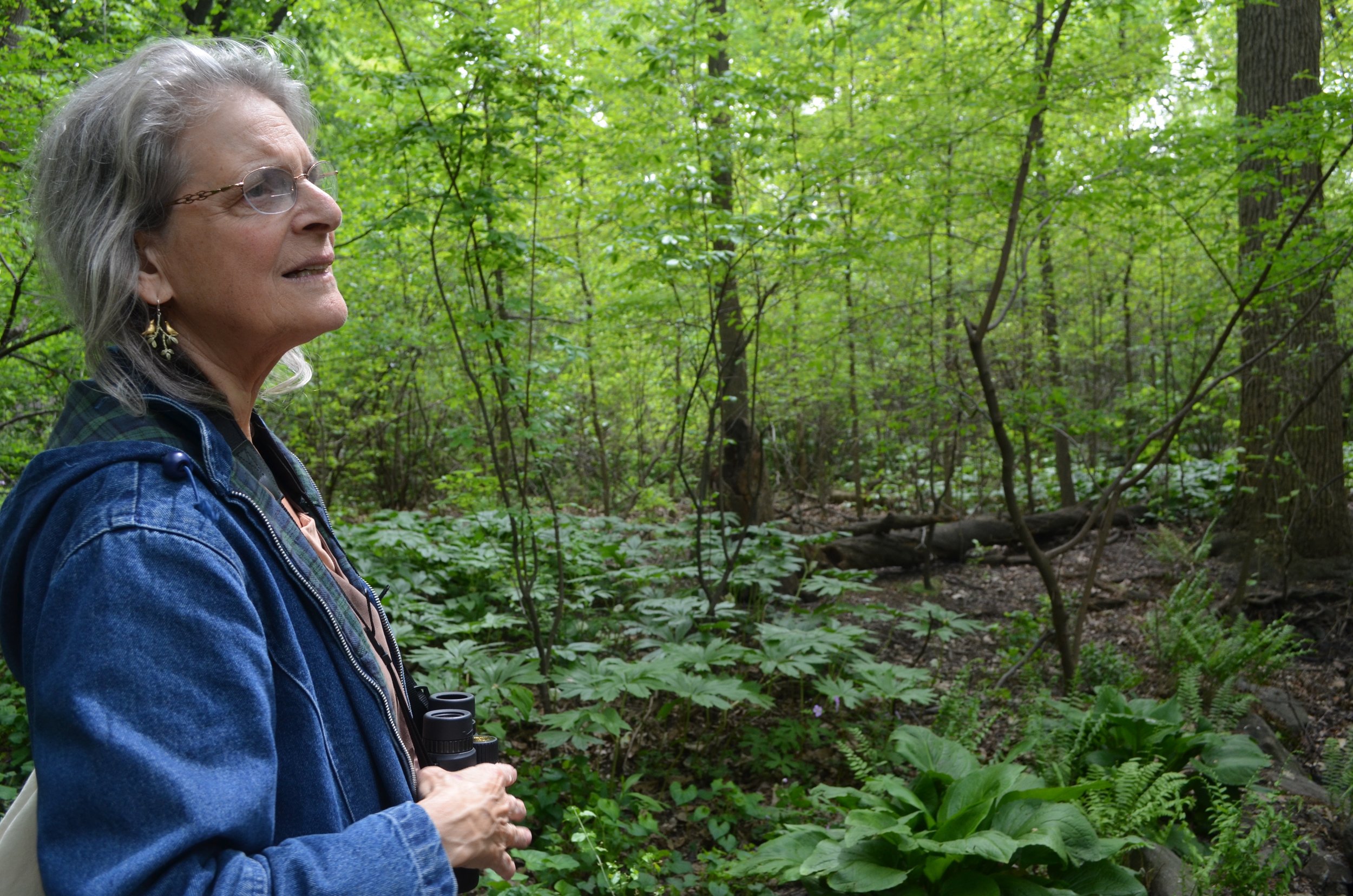1⁄16 inch
COMMON DUCKWEED (LEMNA MINOR) // AQUATIC PLANT // CENTRAL PARK, MANHATTAN
Naturalist Leslie Day has written several field guides about the nature, birds, and street trees of New York City. Ask her about her favorite petite plant in the five boroughs, and she’ll be happy to enlighten you about what makes duckweed such a big deal.
“I love duckweed. They are small floating plants that grow on still water. It is amazing that they’re complete, flowering plants and yet they’re so tiny. They have a stamen and pistil, which you can hardly see with the naked eye. They’re the tiniest angiosperms in the world.
“Duckweed is highly nutritious. The waterfowl love them; fish will eat them. It’s high in protein and carbohydrates. It’s used for agricultural animal feed, treating wastewater, removing toxins from waterways, and may be a future source of ethanol for biofuel.
“When a duck or a heron is swimming around, the duckweed adheres to their legs, feathers, and beaks. They fly off to a different body of water, and the duckweed comes off when they land. That is the way it spreads.
“I was born on West 73rd Street. I always loved nature. I drew so many trees, the crayon called ‘yellow green,’ the color closest to early spring, was always used up first.
Fast-forward. I read a book by Anaïs Nin about women who live in houseboats. That’s why I decided to live on the water. I bought a boat at the 79th Street Boat Basin for four thousand dollars, which I had to borrow.
“I really loved birds. I would walk around with a pocket full of seed. One day, this beautiful bird showed up with a red crest and beak. The next day it was there and the day after that. So I borrowed a field guide and looked it up. It was a female Northern Cardinal. She followed me for three years. At sunrise, she would sit on the railing along the Hudson and start calling to me. Then once, there was a blizzard. I was walking around the traffic circle on 79th Street, and out of the snow she flew to me, calling, calling, calling. I ran home and got the seed for her.
“One day this gorgeous red guy showed up. She took off with him. I never saw her again. Every time I’d see a female, I’d say, ‘Is that you?’ You know, they mate for life. She was such a wild and wonderful creature.
“She changed my life because I went back to school. I wanted to know everything about nature. If it had a name, I wanted to know what it was—every living tree, flower, mushroom, fish, crab. I got my mas- ter’s and my doctorate and started teaching science. This little bird was such an inspiration.
“Nature is so interesting, and it is so beautiful. Even if you’re not interested in the science behind how plants grow, if you’re only touched by the beauty, that’s enough.”
-Leslie Day





